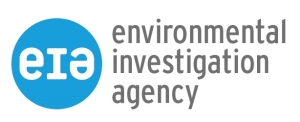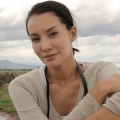Webcast: Will Covid-19 Tame Wildlife Trade?
Environmental Investigation Agency’s Aron White in Conversation With UN Environment Goodwill Ambassador Nadya Hutagalung
Many of recent history’s deadliest diseases spread to humans from wildlife. While we don’t know yet for sure how COVID-19 crossed species barriers to infect humans, initial suggestions it may have been linked to wildlife trade and concern over future pandemic risk have triggered a renewed focus on wildlife trade in China and other countries around the world. What are the interlinkages between global wildlife trade, its demand, use, and different regulatory approaches? And how should we judge recent policy and regulatory changes to wildlife trade in China and elsewhere? Will Covid-19 tame wildlife trade? Watch the webcast with the Environmental Investigation Agency’s (EIA) Aron White in conversation with Nadya Hutagalung, UN Environment Goodwill Ambassador, with inputs from Lixin Huang, former president of the American College of Traditional Chinese Medicine, and Sarah H. Olson, Associate Director for Epidemiology for the Wildlife Conservation Society (WCS) Health Program.
Our Key Takeaways
Wildlife trade, whether legal or illegal, is an extremely complex phenomenon, with an intricate net of trade and smuggling routes, various actors involved in hunting, collecting, poaching and breeding of animals, stockpiling, wholesale, processing and marketing of animal products or products containing animal derivates or parts.
There are a lot of misconceptions about wildlife trade as highlighted by Aron: e.g. legal markets for wildlife do not guarantee that these are sustainable or ethical as they may drive illegal trade; (illegal) wildlife trade happens all around the world, including Europe; "wet markets" aren't necessarily wildlife markets, but usually normal fresh produce markets.
Breeding wild animals for commercial use is frequently not a viable alternative to taking animals from the wild according to EIA, since it often fuels the very same demand that caused the poaching in the first place. It can enable passing off animals caught in the wild as captive-bred, and makes policing very difficult.
Changing consumption patterns and combatting wildlife trade is a very delicate task, as one has to consider the social realities of communities dependent on income from wild animal trade. Alternative livelihoods need to be offered.
There is widespread support for policies curtailing the use of wild animal products in China, especially in Traditional Chinese Medicine, though whether the momentum will hold is unclear. Previous policies have sometimes been a mixed bag, with the government-sanctioned use in medicine and food supplements being at odds with conservationist efforts.
This webcast is co-hosted by EIA.

Slides
Introductory presentation by Aron White:
20200901_Intro ppt_Web_Wild... by Asia Society Switzerland

Aron White is a Wildlife Campaigner and China Specialist at the Environmental Investigation Agency (EIA). Aron has worked on wildlife trade and conservation issues for over six years, following a degree in Chinese at the University of Cambridge, and has lived in Beijing and Taipei. Aron’s work at EIA focuses primarily on trade in big cats, and wildlife trade more generally in China. He has been following wildlife policy developments in the wake of COVID-19 closely, and his work in 2020 so far as covered multiple policy analyses and recommendations, as well as a bilingual report revealing the role of traditional Chinese medicine companies and government agencies in commercial trade in leopard bone.

Nadya Hutagalung, eco-activist – UN Environment and Great Apes Survival Partnership Ambassador – and media personality, parlayed her 35 years in television, film, and fashion to become one of Asia’s leading voices in the Green Movement. Devoting her time and voice to environmental advocacy Nadya made headlines with building one of Singapore’s first eco-home from scratch, a project three years in the making. From that task grew Nadya’s favorite project by far – www.greenkampong.com – which became an online resource for anyone looking for information and news on sustainable living. 2013 saw Nadya creating an ivory reduction campaign targeted at the South East Asian audience which brought her to spend a month in Africa and Asia documenting the illegal trade and its effects. The campaign “Let Elephants Be Elephants” has seen over 8000 people to date taking the pledge against buying ivory. For her work on this campaign and her commitment to environmental activism, Nadya was awarded The 9th Annual Infinite Merit Award by Senayan City, an honour, given to individuals with contributions that are seen to bring glory to Indonesia.
